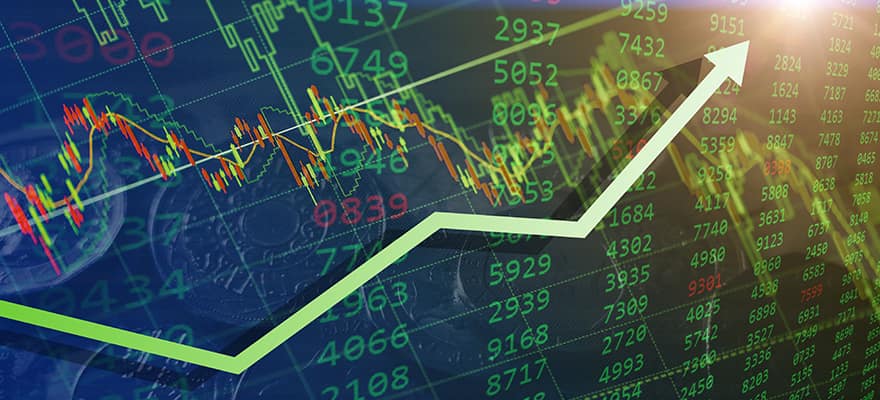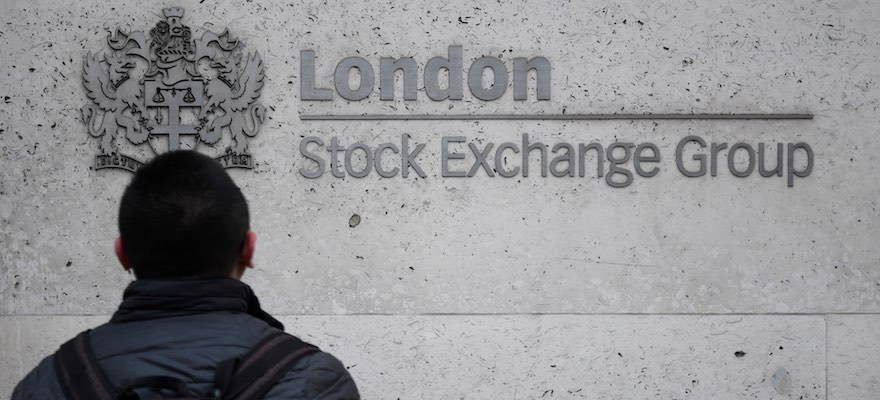China’s central bank chief oozed calm in an annual press briefing in Beijing Saturday, supported by weeks of composure in markets as investor anxiety over the nation’s currency policy eased.
How long the lull lasts will depend on how policy makers manage a balancing act made tougher by a weaker-than-anticipated start to the year for the world’s No. 2 economy. After People’s Bank of China Governor Zhou Xiaochuan spoke at the country’s annual gathering of the legislature, data showed an “alarming” failure of growth to respond to recent stimulus, Bloomberg Intelligence analysts Tom Orlik and Fielding Chen concluded.
The weakening momentum seen in industrial output and retail sales highlight skepticism about the Communist Party’s goal of achieving average growth of at least 6.5 percent in its five-year plan to 2020. Gavekal Dragonomics calls the target “incredible.” JPMorgan Chase & Co. says a sustainable pace is “much lower” than what officials are targeting for this year.
The danger is that to meet the leadership’s objective, which for 2016 is an expansion of 6.5 percent to 7 percent, Zhou will need to loosen monetary policy faster and further. That could intensify depreciation pressures on the yuan, which has benefited in recent weeks from a drop in the dollar.
Looming Leverage
Looser monetary policy, along with the expanded fiscal deficit pledged by Premier Li Keqiang’s cabinet, would quicken a buildup of debt that already amounts to almost 2.5 times gross domestic product.
“This is a risky target for the next five years as it means the continuation of super-loose monetary and fiscal policy,” said Chen Zhiwu, a finance professor at Yale University in New Haven, Connecticut, and a former adviser to China’s State Council. “If market participants have been worried about China since June-July 2015, they have not seen the real thing yet.”
The data released Saturday showed industrial production rose 5.4 percent in the first two months of the year from a year before, the weakest reading since the 2009 global recession. That’s even before policy makers have much to show for a campaign to shut down excess capacity in the unproductive state-owned sector. Retail sales also slowed, while the value of homes soared versus a year ago with property sales in some mid-sized cities doubling. Fixed-asset investment exceeded economists’ estimates.
No Biggie
Speaking hours before the data releases, Zhou, 68, warned banks about increased credit risk and rising real estate prices in the biggest cities. He sought to ease concerns over Volatility
Volatility
In finance, volatility refers to the amount of change in the rate of a financial instrument, such as commodities, currencies, stocks, over a given time period. Essentially, volatility describes the nature of an instrument’s fluctuation; a highly volatile security equates to large fluctuations in price, and a low volatile security equates to timid fluctuations in price. Volatility is an important statistical indicator used by financial traders to assist them in developing trading systems. Traders
In finance, volatility refers to the amount of change in the rate of a financial instrument, such as commodities, currencies, stocks, over a given time period. Essentially, volatility describes the nature of an instrument’s fluctuation; a highly volatile security equates to large fluctuations in price, and a low volatile security equates to timid fluctuations in price. Volatility is an important statistical indicator used by financial traders to assist them in developing trading systems. Traders
Read this Term in the stock and currency markets while saying meeting the five-year growth target would not require a big stretch.
“Excessive monetary policy stimulus isn’t necessary to achieve the target,” Zhou said, reiterating past comments that monetary policy is prudent with a slight easing bias. “If there isn’t any big economic or financial turmoil, we’ll keep prudent monetary policy.”
During the press conference, Zhou, the longest-serving central bank chief among the Group of 20 economies, pushed back a little on monetary-stimulus expectations in an attempt to alleviate fears that the government has a monomaniacal focus on growth to the exclusion of debt risks, Orlik and Chen wrote in a note Saturday.
Dollar Demand
He added soothing words on the currency. There is no need at all “to rush to buy U.S. dollars,” there is no basis for continued yuan weakness and the nation will not seek to boost exports via competitive devaluation, he said.
Meantime, another official signaled ongoing support for the nation’s flailing stock markets. China Securities Regulatory Commission Chairman Liu Shiyu vowed to step in “decisively” if needed to stem the sort of stock-market panic that resulted in a $5 trillion wipeout last summer, adding that it was far too early to think about the state rescue fund leaving the market.
To meet a 2010 goal of doubling gross domestic product and per capita income by 2020, President Xi Jinping late last year said China’s annual average growth should be no less than 6.5 percent in the next five years. The target is now embedded in the nation’s 13th five-year plan covering 2016-2020.
That leaves Zhou and economic policy wedded to an ambitious goal at the same time weak global demand leaves exports in a slump. Growth is seen slowing to 6.2 percent next year and 6.1 percent in 2018, according to the median estimates of Bloomberg surveys.
Yuan Pressure
With the government raising the M2 broad money-supply target to 13 percent this year from 12 percent in 2015, debt will continue to rise, adding pressure on the exchange rate, says Michael Every, head of financial markets research at Rabobank Group in Hong Kong.
“We also expect more interest-rate cuts,” he says. “That is a further negative for the yuan, especially if the Fed presses ahead with rate hikes, as it still seems determined to do.”
Zhou has already stepped up efforts to cushion the economic slowdown, announcing on Feb. 29 a 0.5 percentage point cut to the amount of deposits banks must hold as reserves. An income-tax overhaul is planned to boost consumption and Finance Minister Lou Jiwei has said it’s necessary to increase government borrowing to help other parts of the economy reduce debt.
At Saturday’s briefing, PBOC Deputy Governor Yi Gang said China can achieve the 6.5 percent minimum growth target and that reform and opening up will help boost expansion.
Imbalance Risk
While slumping exports and factory prices, and sluggish industrial production support the case for easing, the concern is Xi’s ambitious growth goal ties policy makers to unsustainable stimulus that fuels imbalances rather than fixes them.
“Can China really afford to tie one hand behind its back?” said Barry Naughton, a professor of Chinese economy at the University of California in San Diego. “If monetary, or fiscal, policy has to be always devoted to making sure growth stays at 6.5 percent, then it can’t be used for other things, including providing extra Liquidity
Liquidity
The term liquidity refers to the process, speed, and ease of which a given asset or security can be converted into cash. Notably, liquidity surmises a retention in market price, with the most liquid assets representing cash.The most liquid asset of all is cash itself.· In economics, liquidity is defined by how efficiently and quickly an asset can be converted into usable cash without materially affecting its market price. · Nothing is more liquid than cash, while other assets represent
The term liquidity refers to the process, speed, and ease of which a given asset or security can be converted into cash. Notably, liquidity surmises a retention in market price, with the most liquid assets representing cash.The most liquid asset of all is cash itself.· In economics, liquidity is defined by how efficiently and quickly an asset can be converted into usable cash without materially affecting its market price. · Nothing is more liquid than cash, while other assets represent
Read this Term when financial systems break down or restricting liquidity when the exchange rate needs to be defended.”
--With assistance from Xiaoqing Pi To contact Bloomberg News staff for this story: Kevin Hamlin in Beijing at khamlin@bloomberg.net. To contact the editors responsible for this story: Malcolm Scott at mscott23@bloomberg.net, Christopher Anstey, Darren Boey
By: Bloomberg News
©2016 Bloomberg News
China’s central bank chief oozed calm in an annual press briefing in Beijing Saturday, supported by weeks of composure in markets as investor anxiety over the nation’s currency policy eased.
How long the lull lasts will depend on how policy makers manage a balancing act made tougher by a weaker-than-anticipated start to the year for the world’s No. 2 economy. After People’s Bank of China Governor Zhou Xiaochuan spoke at the country’s annual gathering of the legislature, data showed an “alarming” failure of growth to respond to recent stimulus, Bloomberg Intelligence analysts Tom Orlik and Fielding Chen concluded.
The weakening momentum seen in industrial output and retail sales highlight skepticism about the Communist Party’s goal of achieving average growth of at least 6.5 percent in its five-year plan to 2020. Gavekal Dragonomics calls the target “incredible.” JPMorgan Chase & Co. says a sustainable pace is “much lower” than what officials are targeting for this year.
The danger is that to meet the leadership’s objective, which for 2016 is an expansion of 6.5 percent to 7 percent, Zhou will need to loosen monetary policy faster and further. That could intensify depreciation pressures on the yuan, which has benefited in recent weeks from a drop in the dollar.
Looming Leverage
Looser monetary policy, along with the expanded fiscal deficit pledged by Premier Li Keqiang’s cabinet, would quicken a buildup of debt that already amounts to almost 2.5 times gross domestic product.
“This is a risky target for the next five years as it means the continuation of super-loose monetary and fiscal policy,” said Chen Zhiwu, a finance professor at Yale University in New Haven, Connecticut, and a former adviser to China’s State Council. “If market participants have been worried about China since June-July 2015, they have not seen the real thing yet.”
The data released Saturday showed industrial production rose 5.4 percent in the first two months of the year from a year before, the weakest reading since the 2009 global recession. That’s even before policy makers have much to show for a campaign to shut down excess capacity in the unproductive state-owned sector. Retail sales also slowed, while the value of homes soared versus a year ago with property sales in some mid-sized cities doubling. Fixed-asset investment exceeded economists’ estimates.
No Biggie
Speaking hours before the data releases, Zhou, 68, warned banks about increased credit risk and rising real estate prices in the biggest cities. He sought to ease concerns over Volatility
Volatility
In finance, volatility refers to the amount of change in the rate of a financial instrument, such as commodities, currencies, stocks, over a given time period. Essentially, volatility describes the nature of an instrument’s fluctuation; a highly volatile security equates to large fluctuations in price, and a low volatile security equates to timid fluctuations in price. Volatility is an important statistical indicator used by financial traders to assist them in developing trading systems. Traders
In finance, volatility refers to the amount of change in the rate of a financial instrument, such as commodities, currencies, stocks, over a given time period. Essentially, volatility describes the nature of an instrument’s fluctuation; a highly volatile security equates to large fluctuations in price, and a low volatile security equates to timid fluctuations in price. Volatility is an important statistical indicator used by financial traders to assist them in developing trading systems. Traders
Read this Term in the stock and currency markets while saying meeting the five-year growth target would not require a big stretch.
“Excessive monetary policy stimulus isn’t necessary to achieve the target,” Zhou said, reiterating past comments that monetary policy is prudent with a slight easing bias. “If there isn’t any big economic or financial turmoil, we’ll keep prudent monetary policy.”
During the press conference, Zhou, the longest-serving central bank chief among the Group of 20 economies, pushed back a little on monetary-stimulus expectations in an attempt to alleviate fears that the government has a monomaniacal focus on growth to the exclusion of debt risks, Orlik and Chen wrote in a note Saturday.
Dollar Demand
He added soothing words on the currency. There is no need at all “to rush to buy U.S. dollars,” there is no basis for continued yuan weakness and the nation will not seek to boost exports via competitive devaluation, he said.
Meantime, another official signaled ongoing support for the nation’s flailing stock markets. China Securities Regulatory Commission Chairman Liu Shiyu vowed to step in “decisively” if needed to stem the sort of stock-market panic that resulted in a $5 trillion wipeout last summer, adding that it was far too early to think about the state rescue fund leaving the market.
To meet a 2010 goal of doubling gross domestic product and per capita income by 2020, President Xi Jinping late last year said China’s annual average growth should be no less than 6.5 percent in the next five years. The target is now embedded in the nation’s 13th five-year plan covering 2016-2020.
That leaves Zhou and economic policy wedded to an ambitious goal at the same time weak global demand leaves exports in a slump. Growth is seen slowing to 6.2 percent next year and 6.1 percent in 2018, according to the median estimates of Bloomberg surveys.
Yuan Pressure
With the government raising the M2 broad money-supply target to 13 percent this year from 12 percent in 2015, debt will continue to rise, adding pressure on the exchange rate, says Michael Every, head of financial markets research at Rabobank Group in Hong Kong.
“We also expect more interest-rate cuts,” he says. “That is a further negative for the yuan, especially if the Fed presses ahead with rate hikes, as it still seems determined to do.”
Zhou has already stepped up efforts to cushion the economic slowdown, announcing on Feb. 29 a 0.5 percentage point cut to the amount of deposits banks must hold as reserves. An income-tax overhaul is planned to boost consumption and Finance Minister Lou Jiwei has said it’s necessary to increase government borrowing to help other parts of the economy reduce debt.
At Saturday’s briefing, PBOC Deputy Governor Yi Gang said China can achieve the 6.5 percent minimum growth target and that reform and opening up will help boost expansion.
Imbalance Risk
While slumping exports and factory prices, and sluggish industrial production support the case for easing, the concern is Xi’s ambitious growth goal ties policy makers to unsustainable stimulus that fuels imbalances rather than fixes them.
“Can China really afford to tie one hand behind its back?” said Barry Naughton, a professor of Chinese economy at the University of California in San Diego. “If monetary, or fiscal, policy has to be always devoted to making sure growth stays at 6.5 percent, then it can’t be used for other things, including providing extra Liquidity
Liquidity
The term liquidity refers to the process, speed, and ease of which a given asset or security can be converted into cash. Notably, liquidity surmises a retention in market price, with the most liquid assets representing cash.The most liquid asset of all is cash itself.· In economics, liquidity is defined by how efficiently and quickly an asset can be converted into usable cash without materially affecting its market price. · Nothing is more liquid than cash, while other assets represent
The term liquidity refers to the process, speed, and ease of which a given asset or security can be converted into cash. Notably, liquidity surmises a retention in market price, with the most liquid assets representing cash.The most liquid asset of all is cash itself.· In economics, liquidity is defined by how efficiently and quickly an asset can be converted into usable cash without materially affecting its market price. · Nothing is more liquid than cash, while other assets represent
Read this Term when financial systems break down or restricting liquidity when the exchange rate needs to be defended.”
--With assistance from Xiaoqing Pi To contact Bloomberg News staff for this story: Kevin Hamlin in Beijing at khamlin@bloomberg.net. To contact the editors responsible for this story: Malcolm Scott at mscott23@bloomberg.net, Christopher Anstey, Darren Boey
By: Bloomberg News
©2016 Bloomberg News
About the Author:
Bloomberg News
About the Author:
Bloomberg News















